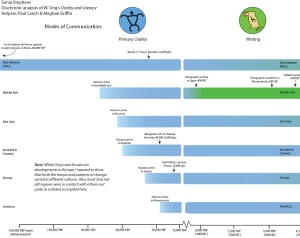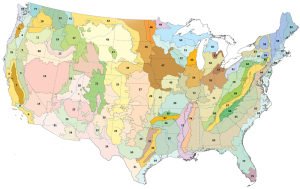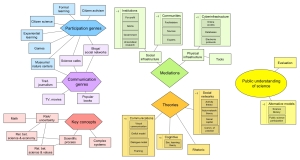It’s been a month since the Deepwater Horizon oil spill site was temporarily capped. So what is going on with the oil from the spill? Various media outlets have recently been reporting that about 75% of the oil has been “dealt with,” meaning that only about 25% remains a threat to wildlife. Pretty good, right? These numbers are coming directly from a NOAA report, which categorizes the current state of the oil into seven categories:

Well, it turns out that what “dealt with” means is a question of interpretation. “Dealt with,” to me, implies “taken care of,” “no longer a concern,” and “under control.” I suspect that the phrase carries those connotations for many people. Organizations reporting on the NOAA report are including “Evaporated or Dissolved, Naturally Dispersed, and Chemically Dispersed” categories in their 75% “dealt with” calculations, implying that these categories of oil are no longer a problem. (This interpretation is encouraged in the NOAA chart, which highlights that oil in some categories is being naturally degraded.) But what do these categories actually mean?
“Dispersed” oil is oil which has been broken into tiny little droplets. In the case of chemically dispersed oil, these droplets are coated with chemical dispersants; in the case of naturally dispersed oil, droplets have been broken up through wave action or some other means. It is still in the water-it hasn’t magically disappeared- but it’s in tiny little drops, rather than large slicks or goopy tar balls. Think about when you wash your dishes: the dish soap breaks up the greasy residue on your frying pan so the water can wash it away, but that grease is still in the water that goes down the drain. “Dissolved” oil has been broken into even smaller pieces, but it, too, is still in the water- it’s just impossible to see.
Scientists from the Georgia Sea Grant program now say- and I have to agree, according to how I understand the phrase- that this dissolved and dispersed oil is not “dealt with.” In fact, most of it- up to 79% of the spilled oil- is still in the ocean, creating problems (pdf of press release). Here’s the Sea Grant analysis of the situation (note that the Sea Grant scientists do not include the “direct recovery” oil from the NOAA chart in their analysis, since it was not actually spilled into the water, so their numbers differ):

So, what is going on here? The discrepancy about the amount of oil remaining in the water seems to largely hinge on how these different categories of oil are interpreted. (The Sea Grant and NOAA scientists also disagree on the calculations, which creates additional disagreements in the two estimates.) The NOAA report is optimistic in tone and interpretation, but note the highlighted text:
“A third (33 percent) of the total amount of oil released in the Deepwater Horizon/BP spill was captured or mitigated by the Unified Command recovery operations, including burning, skimming, chemical dispersion and direct recovery from the wellhead… An additional 25 percent of the total oil naturally evaporated or dissolved, and 16 percent was dispersed naturally into microscopic droplets. The residual amount, just over one quarter (26 percent), is either on or just below the surface as residue and weathered tarballs, has washed ashore or been collected from the shore, or is buried in sand and sediments. Dispersed and residual oil remain in the system until they degrade through a number of natural processes. Early indications are that the oil is degrading quickly.”
This one-line caveat is an important one, because it implies that these types of oil are not “dealt with.” Yes, some of the oil will be degraded by microbes naturally, but a large portion of the oil has settled into deep underwater plumes where there is little microbial activity, and another chunk is buried in anoxic wetland sediment where it’s unknown how quickly it will be degraded. This oil is certainly not “dealt with” today, and other media outlets are beginning to pick up on that fact. Nor will it be for months, years, or possibly decades. While it’s out of sight, it shouldn’t be out of mind.


